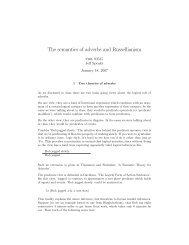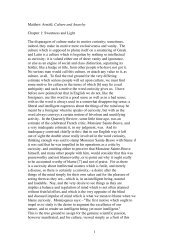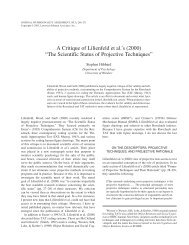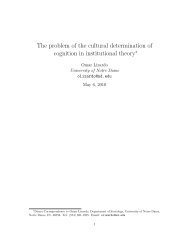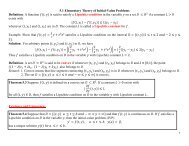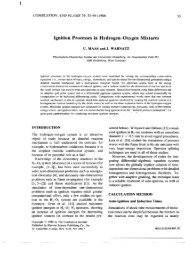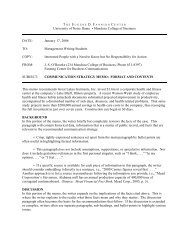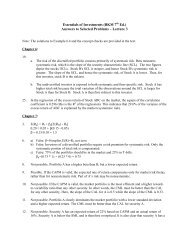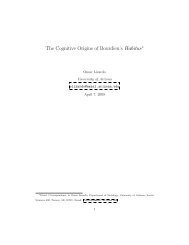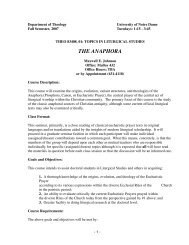Mitigation of Motions of Tall Buildings with Specific Examples of ...
Mitigation of Motions of Tall Buildings with Specific Examples of ...
Mitigation of Motions of Tall Buildings with Specific Examples of ...
You also want an ePaper? Increase the reach of your titles
YUMPU automatically turns print PDFs into web optimized ePapers that Google loves.
3.2 Belt/Bandage Systems<br />
The outrigger concept has been modified<br />
via the use <strong>of</strong> belt walls/trusses as<br />
“virtual outriggers,” as shown schematically<br />
in Figure 3a, accomplishing the<br />
same transfer <strong>of</strong> loads <strong>with</strong>out requiring<br />
the complicated direct connection<br />
between the outrigger system and core<br />
(Nair 1998). The concept relies upon<br />
stiff floor diaphragms to transfer the<br />
moment in the form <strong>of</strong> a horizontal couple<br />
from the core to the belt wall/truss<br />
which connects the exterior columns <strong>of</strong><br />
the structure. The wall/truss then converts<br />
the horizontal couple into a vertical<br />
couple in the exterior columns. This<br />
“virtual outrigger” system, utilizing belt<br />
walls, has been applied to the world’s<br />
tallest reinforced concrete building: the<br />
77 story Plaza Rakyat (Fig. 3b) <strong>of</strong>fice<br />
tower in Kuala Lumpur, Malaysia<br />
(Baker et al. 1998). The structure relies<br />
on a concrete shear core and 2 story<br />
exterior concrete belt walls connected to the concrete perimeter frame at two levels to carry the<br />
lateral loads <strong>with</strong>out the restriction <strong>of</strong> mechanical space through the presence <strong>of</strong> conventional outrigger<br />
systems.<br />
Vierendeel<br />
bandage<br />
super<br />
column<br />
Figure 4. Schematic <strong>of</strong> Vierendeel<br />
bandage.<br />
core<br />
belt<br />
truss<br />
(a) (b)<br />
Figure 3. (a) Illustration <strong>of</strong> “virtual outrigger” system using belt<br />
trusses; (b) Model <strong>of</strong> Plaza Rakyat (taken from Skidmore,<br />
Owings, and Merrill, LLP).<br />
A similar concept, the Vierendeel bandage, shown in Figure<br />
4, has been implemented in the 775 ft tall First Bank<br />
Place in Minneapolis (Dorris 1991). The tower, supported<br />
by a cruciform spine <strong>with</strong> steel columns and four massive<br />
composite supercolumns, lacked sufficient torsional stiffness,<br />
requiring diagonal bracing. However, to permit<br />
unobstructed views, a series <strong>of</strong> 3 story tall, 36 inch deep<br />
Vierendeel bandages were implemented. The addition <strong>of</strong><br />
the bandages triples the tower’s torsional stiffness while<br />
improving the lateral stiffness by 36%. In addition, the<br />
bandages carry the load from the upper floors and transfer<br />
it to the four major columns at the corner.<br />
<strong>Mitigation</strong> <strong>of</strong> <strong>Motions</strong> <strong>of</strong> <strong>Tall</strong> <strong>Buildings</strong> <strong>with</strong> <strong>Specific</strong> <strong>Examples</strong> <strong>of</strong> Recent Applications 6



